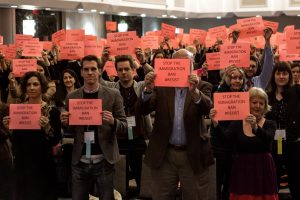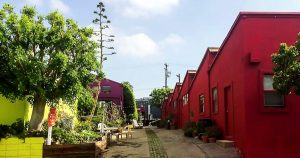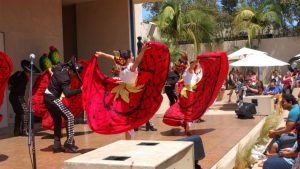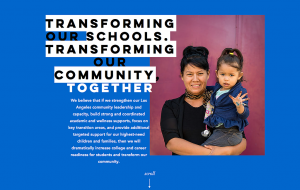CAA News Today
An Interview with 2018 Keynote Speaker Charles Gaines
posted by CAA — Dec 13, 2017
CAA 2018 Annual Conference Keynote Speaker Charles Gaines is a Los Angeles-based artist whose complex grid-work and mapping pulls from conceptual art and the field of philosophy. His work is currently on view at ICA Miami, at Cornell Fine Arts Museum, at kurimanzutto in Mexico City, and he has an upcoming show at Galerie Max Hetzler in Berlin. CAA media and content manager, Joelle Te Paske spoke with Charles about what he’s working on, his teaching at CalArts and Los Angeles in 2017, and if artists can change the world.
CAA’s Annual Conference Convocation, including the keynote address and presentation of the Awards for Distinction, will occur February 21, 6:00-7:30PM and will be livestreamed.
This interview has been edited for length and clarity.
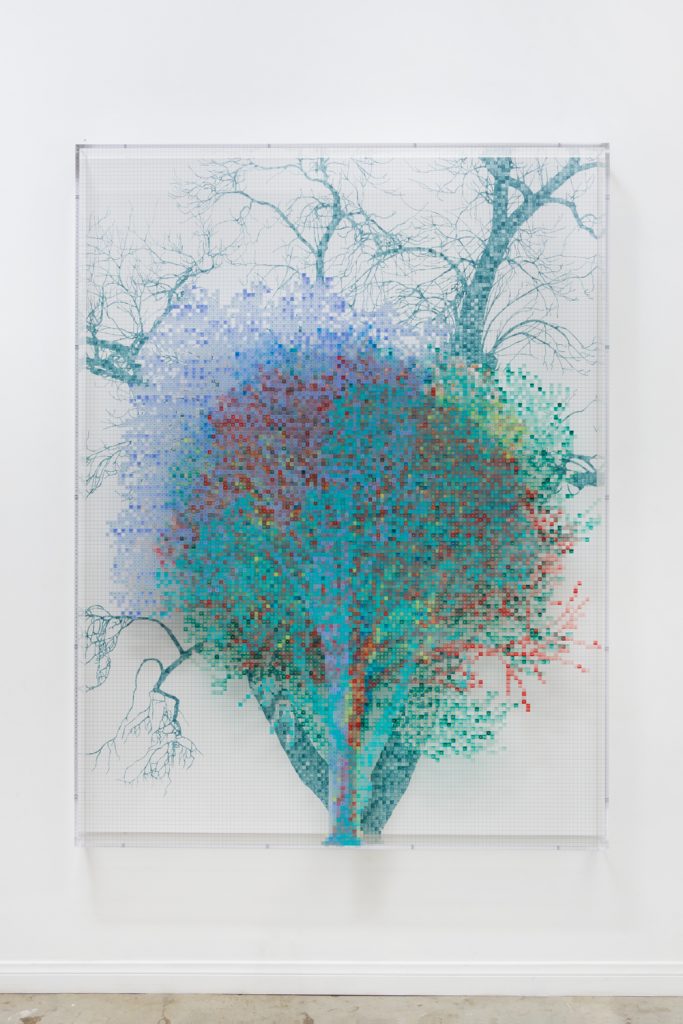
Charles Gaines, Numbers and Trees: Central Park Series 2, Tree #7, Maria, 2017. © Charles Gaines. Courtesy Paula Cooper Gallery, New York
Joelle Te Paske: I read the interview that you did for your Studio Museum exhibition in 2014 and you said: “I use systems in order to provoke the issues around representation.” I’m curious about how you’re thinking about systems right now in 2017.
Charles Gaines: I work with systems and structures, which results in the fact that the work itself is rule-based. My interest in it is really a suspicion about standard ideas of subjectivity. I felt that when I was in graduate school, the way we talked about art, seems that it was based on the assumption that the art object itself was a kind of access to the subjectivity of the artist. I got suspicious about [that] idea in modernism. That the purpose of art is, at its most essential core, a subjective practice, and if you take subjectivity out of it, you’ve eliminated or eviscerated the idea of art itself.
I wasn’t necessarily opposed to the concept of aesthetics itself, but again, when it became the principal and core purpose of a work of art, I had a lot of problems with that—to produce this aesthetic object—because that brings up issues of culture. And so, I was saying that aesthetic effects can be produced not by one’s intuition, but they can also be produced by rational strategies and intellectual, productive strategies, and one can have the aesthetic experience that’s a product of that. It’s a way of challenging the notion of how representation works in works of art.
JTP: It’s finding an alternative route into meaning, essentially. It gives you a different pathway.
CG: Yes.
JTP: Do you have a memory of first noticing a system—I’ve read that you’re interested in Buddhist teachings—that you hadn’t considered before?
CG: I was introduced to two books, one by Ajit Mookerjee which is called Tantra Art, and the other is Henri Focillon, The Life of Forms in Art. Buddhist works are interesting to me because the monks made works of art, but had no concept of the unconscious.
JTP: Interesting.
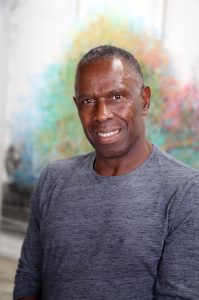
Charles Gaines. Photo: Katie Miller
CG: The personal subjectivity, they did not privilege that. But nevertheless, they have an art practice, made sculptures, drawings, and so it was interesting, because I had had to go outside the Western paradigm in order to discover that there are other ways of making work. And another thing that interested me about that is that the effect of that kind of process, this kind of sublime exhilarating experience, where you don’t actually have control over what you’re doing, because either the system has control of it or chance has control of it. And so you’re in this space that is to me way more interesting.
JTP: Yes, I’d say there’s a different kind of freedom to be found there.
If you could recommend one book to students or artists that they probably haven’t read, what would you recommend?
CG: Right now, books that deal with the postcolonial. Books that allow you to think about the relationship of art and culture, and the way that challenges assumptions of modernism. In my particular case, a very important book is Fred Moten’s [and Stefano Harney’s] The Undercommons, because of the way [Moten is] trying to negotiate what blackness means. It’s quite different from certain sociological or essentialist ideas of that subject.
JTP: Thinking about your role at CalArts, what are the changes that you’ve seen as part of the faculty?
CG: CalArts has managed to maintain, to some degree, the kind of reputation of an art practice that is not the standard. I was talking to some people about this the other day, and in particular Europeans generally think that CalArts is the most elite of art schools. They think that it’s among the best schools in the United States, but the reason why is because the school privileges ideas and challenges notions of certain standard practices. There’s a general suspicion of the idea of mastery.
JTP: That’s beautifully put.
CG: I mean, a lot of schools have developed programs or disciplines called new genres. So they’ll have painting, drawing, sculpture, printmaking, and the new genres. And so new genres is, I think, supposed to deal with the issues that are conceptually driven in works of art. You know, in particular, the avant-garde.
CalArts was invented with that kind of idea, and so I still think it’s a bit radical. Which blows me away actually, because I still get into discussions with other professionals, not so much in the art world, but certainly in academia, about whether the role of mastery informs curriculum. In our Masters program, we get the students who never really challenged the idea of mastery. In the 1970s, 80s, and 90s, there was the idea of art as an avant-garde practice; it wasn’t something that was controversial. It’s sort of a weird reversal of history, that the idea of art as an avant-garde practice is becoming more and more provocative. Particularly in the way people are thinking about educational systems and curriculum development and so forth. It’s the idea that they haven’t really come into the framework experienced in critiquing the idea of mastery with respect to works of art. I guess that’s the largest change that I’ve seen.
JTP: Yes, I think that your comment about the longer view of the history and the purpose of art is interesting, because history repeats itself and reconfigures itself.
When you’re working with students, what are you most excited about?
CG: In terms of what I enjoy in the experience of teaching at CalArts, we are lucky to get really good students. And the graduate students tend to be a little older and so, you wind up having the richest seminars—critical discussions about works of art, where the teaching goes two ways. I learn from them, they learn from me.
JTP: That’s terrific.
CG: You know, that keeps it quite vibrant and alive. There is a transition that the art students have to go through to get to that point where their criticality can reach a more sophisticated level. Their first year, [that] tends to be pretty traumatic for them. The dismantling of a lot of their assumptions about art. But through this process, they segue into the ability to be quite intelligent and quite interesting [in] the way they ultimately critique ideas and each other’s work.
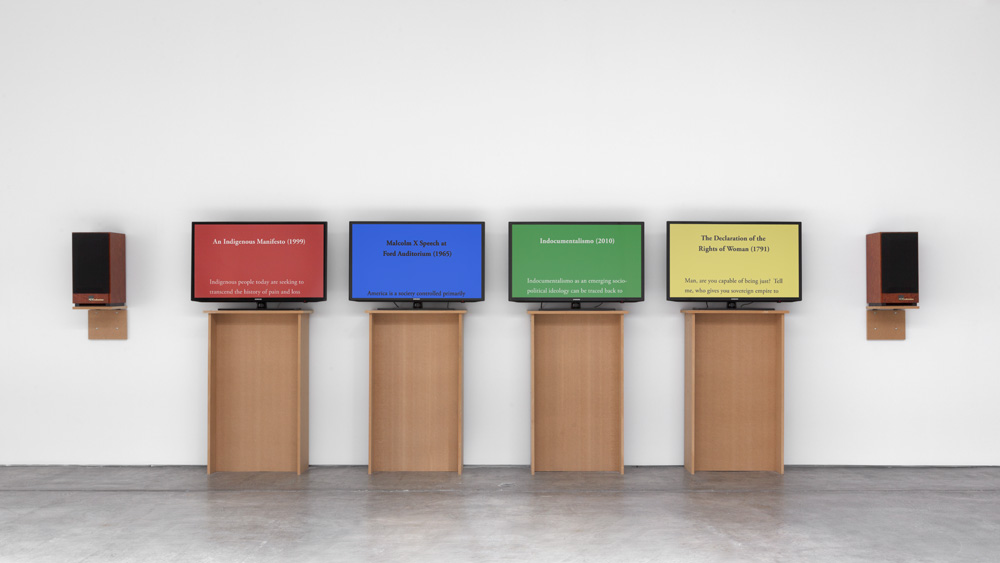
Charles Gaines, Manifestos 2 (Installation), 2013. Courtesy of the Museum of Modern Art, New York. Photo: Steven Probert © Charles Gaines. Courtesy Paula Cooper Gallery, New York
JTP: I’m curious too about LA. I know that you’re a longtime resident of the city—if you had to choose one thing for people coming to the conference, what you would recommend?
CG: LA has a remarkable list of museums, mostly contemporary art museums and modern art museums. Nobody should miss that. The art scene in LA is just generally interesting. I can also easily make a plug, because I’m on the board of the new ICA LA (Institute of Contemporary Art, Los Angeles). People should make sure not to miss the ICA LA.
JTP: Thank you, that’s great. I know too that you’ve been part of the debate in Boyle Heights about art spaces and gentrification, and there’s been dialogue on all sides about it.
CG: I got caught up in the whirlwind of that. In this particular instance, the artists who’ve been moving into Boyle Heights in the last five or 10 years or so formed an alliance with a particular group of Latino artists to form a new strategy to fight gentrification. I was sort of upset by the fact that they’re attacking some very progressive alternative spaces.
In Boyle Heights, there’s a legitimate effort to fight gentrification that follows a history of certain strategies of fighting it that are unique to minority communities. In other words, Boyle Heights is a depressed community and was formed not because Latinos and Black people wanted to live there; it was formed because of redlining. And so those people, they want to stay in Boyle Heights, but they want it improved. And so their strategy against gentrification includes finding ways where they can increase their voices in terms of how this plays itself out. But this other group does not want any improvement. They just want to stop it.
They’re not interested in the idea of improvement, so what I said was that the artists who moved to Boyle Heights must recognize that they’re the first stage of gentrification. And I said that they were appropriating and colonizing the interests of the minority community.
JTP: You’re saying development could be good, it should be driven by the people who have been living there. They should have input and they should be guiding it.
CG: Whether it’s good or not, it’s inevitable.
JTP: It’s inevitable; okay that is a good distinction.
CG: There isn’t history where these kind of things, where gentrification was essentially stopped. What happened is that it was controlled.
JTP: We definitely want people coming from out of town to be aware of what is happening in Los Angeles. It’s helpful to hear your perspective, because you’ve lived there a long time and you’ve been active and involved, so thank you.
By the way, have you attended CAA conferences in the past?
CG: Absolutely. In fact, I’ve even been on a couple of panels. Several times in the past. There’s such a wide variety that’s available to see. I think it is very, very important to maintain that diversity and I have been noticing the increase in social and cultural issues.
Joelle: That’s definitely something we’re working on here at CAA.
I do have one more question, and it’s my favorite. Please feel free to answer it however you’d like. Do you think artists can change the world?
CG: I mean, it’s a cause and effect thing. Artists can change our ideas about art. But artists can also play a role in changing our ideas about society. They can play a role in that, like the activism that artists [did] in the 1970s helped to increase the number of women and minorities in art. And that comes from not only artists dealing with politics, but at the same time culture in general, a critique of male dominance and white male dominance, so artists play a role with other forms of social activism in changing things. It’s not like you can make a work of art and everybody’s just like “Oh, okay, I feel differently now.”
I think that people who make the argument that artists can’t change things—the phrase itself makes no sense to me. But the people who make that argument make it under the assumption—this is why Fred Moten’s The Undercommons is such an important book—of a simplistic notion about what politics is and how it works.
JTP: I agree. It’s my favorite question, because I very much believe that artists play a role in doing so.
This has been a rich discussion, thank you for taking the time. Is there anything else that you’d like to add in for people reading this?
CG: It’s a pleasure talking, and I’m looking forward to the event. I don’t know what I’m going to talk about yet, but I’ll think of something.
JTP: Yes, from this conversation, I have a feeling you definitely will.
Action Needed! Protect Net Neutrality and the Open Internet
posted by CAA — Dec 13, 2017
Tomorrow, the Federal Communications Commission (FCC) is voting to repeal net neutrality—the idea that internet service providers should treat all online content equally without blocking or slowing down specific websites or allowing companies to pay for preferential treatment.
Net neutrality is important to intellectual freedom, freedom of speech, and access to information. If access to the internet becomes regulated by the ability to pay higher fees for certain types of content, many libraries, museums, non-profit organizations, and activist groups will be forced to choose between providing crucial services and providing full access to the internet.
Click here to protect net neutrality
Read more on the issue:
Net Neutrality Rollback Concerns Colleges (Inside Higher Ed)
Why Does Net Neutrality Matter to Libraries? (ALA American Library Association)
Net Neutrality: Why Artists and Activists Can’t Afford to Lose It (New York Times)
Call for Contributions to RAAMP (Resources for Academic Art Museum Professionals)
posted by CAA — Dec 12, 2017
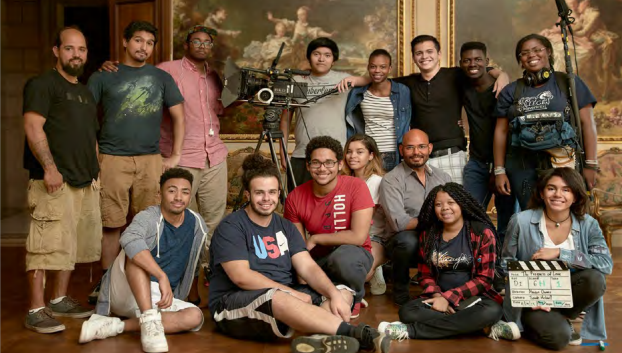
Honor students from The Cinema School at The Frick Collection, 2016, from AAMD’s “Next Practices in Diversity & Inclusion” PDF in RAAMP. Photo: Michael Bodycomb
Given the spirited discussion taking place on a number of curatorial listservs and websites, RAAMP (Resources for Academic Art Museum Professionals) invites submissions to add to its publicly accessible online archive for individuals working in academic art museums.
Examples include museum strategic plans, campaigns for outreach to campus communities, and strategies for diversity and inclusion in the academic art museum, and include PDFs, links, videos, and more.
Click here to submit resources.
You can also browse the existing resources, submit updates, or join the conversation on Humanities Commons.
What is RAAMP?
RAAMP serves to promote scholarship, advocacy, and discussion related to the role of academic art museums and their contribution to the educational mission of their parent institutions. To this end, it functions as a publicly accessible online repository; it collects, stores, and shares resources.
RAAMP is a project of the CAA with support from The Andrew W. Mellon Foundation.
News from the Art and Academic Worlds
posted by CAA — Dec 06, 2017
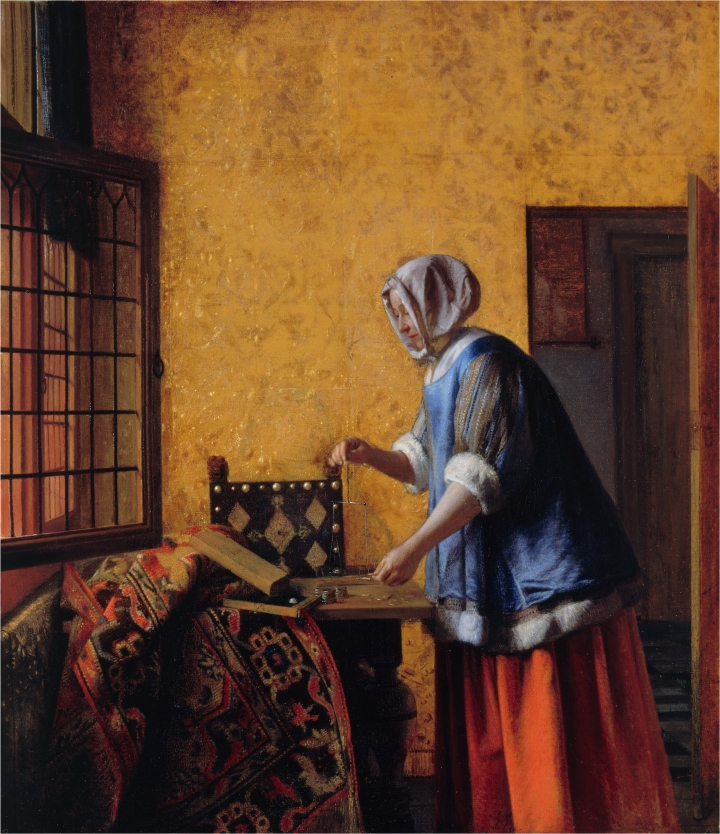
Pieter de Hooch, Woman Weighing Coins (c. 1664), oil on canvas (image courtesy of the Staatliche Museen zu Berlin, Gemäldegalerie, property of Kaiser Friedrich Museumsverein), included in Vermeer and the Masters of Genre Painting.
Each week CAA News summarizes articles, published around the web, that CAA members may find interesting and useful in their professional and creative lives.
Academics and Artists Weigh In on Controversial City Monuments
Over 120 academics and artists have urged Mayor Bill de Blasio to remove five public monuments and markers they say celebrate racism. (New York Times)
The High Life of Vermeer and his Contemporaries
An exhibition at the National Gallery of Art reinserts Vermeer into the tradition in which he worked, both demystifying his paintings and lending force to his take on the genre. (Hyperallergic)
Seven of the Met’s Tiniest Masterpieces
From a 19th-century necklace of miniature portraits to an ancient Egyptian scarab, here are seven of the Met’s tiniest works of art. (Artsy)
Teenagers in Maryland Create a Pop-Up Museum to Explain Their Lives and Struggles
The Museum of Contemporary American Teenagers (MoCAT) is scheduled to open today. (Washington Post)
A Whale’s Tale: Longest Painting in North America Restored
A museum has restored the longest painting in North America so it can share the story of American whaling. (Associated Press)
UK Museums’ Right to Charge Image Fees is Called into Question
A campaign for institutions to free up photographs of out-of-copyright works is backed by legal experts. (The Art Newspaper)
News from the Art and Academic Worlds
posted by CAA — Nov 29, 2017
Each week CAA News summarizes articles, published around the web, that CAA members may find interesting and useful in their professional and creative lives.
Histories of 16th-Century French Art Have Overlooked Manuscript Illumination—Until Now
A new book is fruit of a lifetime’s research by the late Getty curator Myra Orth. (The Art Newspaper)
This New Algorithm Writes Perfect “Artspeak”
Istanbul-based artist Selçuk Artut has developed a tool to explore a familiar art world phenomenon. (Artsy)
Needed: A New Graduate Adviser-Advisee Relationship
How can graduate advisers think strategically about their advisees’ career preparation within the flawed system for PhDs? (Inside Higher Ed)
The Long Ethical Arc of Displaying Human Remains
A look at why museums exhibit Egyptian mummies, but not Native American bones. (Atlas Obscura)
At Colby College, an Honor for a Former Slave
Colby, like many colleges, is grappling with its complicated historical ties to slavery. (The Boston Globe)
Malick Sidibé’s Paris Survey Is an Electrifying Portrait of Mali in the Swinging Sixties
Mali Twist is the largest exhibition of the photographer’s work to date. (Artnet News)
Support the CAA Community on #GivingTuesday
posted by CAA — Nov 28, 2017
As we celebrate the spirit of generosity on #GivingTuesday, we’re highlighting LA-based organizations to consider giving to alongside CAA.
We thank you for your support!
COLLEGE ART ASSOCIATION
This past year, we fought for the causes of our members and those in the arts and culture field at large. Your contribution helps to ensure that CAA continues our mission in promoting the visual arts and their understanding through advocacy, intellectual engagement, and a commitment to the diversity of practices and practitioners. The larger our voice, the larger the impact we will have.
18TH STREET ARTS CENTER
One of our recommended 2018 conference stops, the 18th Street Arts Center is one of the top twenty artist residency programs in the US. They value art-making as an essential component of a vibrant, just, and healthy society where the creative process is just as important as the outcome.
MUSEUM OF LATIN AMERICAN ART (MOLAA)
Another one of our 2018 conference stops, the Museum of Latin American Art (MOLAA) is the only museum in the United States dedicated to modern and contemporary Latin American art, and serves the greater Los Angeles area.
PROMESA BOYLE HEIGHTS
Promesa Boyle Heights is a collective of residents, youth, schools, and community organizations united in lifting community voices and working together to transform conditions and improve opportunities for students and families in Los Angeles.
Advocacy Works
posted by CAA — Nov 20, 2017
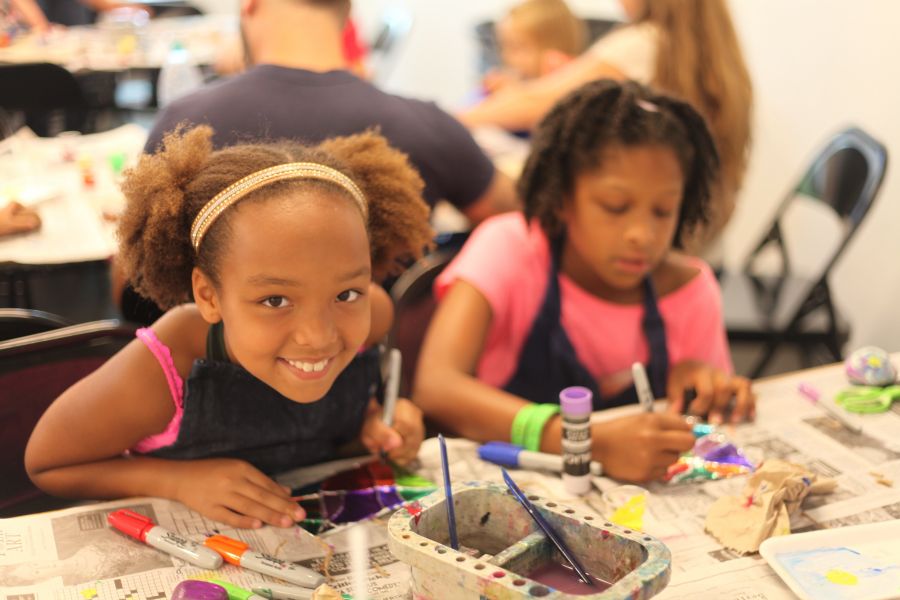
Supported by the NEH, Louisville’s Cultural Pass Program gives youth the chance to take art classes, in addition to providing them access to museums and other institutions. Image: Louisville-Jefferson County Metro Government
Last week, I attended a talk by Stephen Kidd, the executive director of the National Humanities Alliance. Steve reported that despite the White House’s attempt to zero out the National Endowment for the Humanities (NEH), the current House budget proposes level funding for the Title VI programs and the Institute of Museum and Library Services (IMLS). Their budget also envisions $145 million for the NEH, only a $5 million cut from last year.
Today, the Senate released a draft bill that provides $149.8 million in funding for the National Endowment for the Humanities for Fiscal Year 2018. Providing the same funding level as FY 2017 and $2 million above FY 2016, this bill is a forceful rejection of the administration’s call to eliminate the NEH.
Steve pointed out that these developments are a direct result of the grassroots advocacy by many artists and scholars, in particular, members of organizations such as CAA. All told, more than 200,000 messages were sent to members of Congress and they clearly had an impact.
If you get a moment, take a look at NEH for All: https://nehforall.org/. The Mellon-funded project highlights the impact that NEA-funded projects have across the nation.
Many thanks for all of your advocacy!
Hunter O’Hanian
Executive Director and Chief Executive
Affiliated Society News for November 2017
posted by CAA — Nov 16, 2017
Affiliated Society News shares the new and exciting things CAA’s affiliated organizations are working on including activities, awards, publications, conferences, and exhibitions. For more information on Affiliated Societies, click here.
Public Art Dialogue
The Fall 2018 issue of Public Art Dialogue journal will be devoted to the theme of “Public Art as Political Action.” The call for papers follows:
Public art is a process that often requires collaboration and compromise and, in the popular imagination, public art is also associated with the need for consent. However, the public sphere is an important place of dissent and many public art forms serve as interventions by critiquing the status quo, expressing dissatisfaction with the political powers that be, and questioning and reinterpreting historical narratives. This issue aims to examine topics surrounding protest art in the public realm. Submissions might explore the visual culture of protest movements; performances, projections, and posters that start public dialogues (physical and virtual) using visual means; historic or contemporary public art projects engaged with political protest. Submissions may also address how photography operates as a language of protest in the public realm. Though a resurgence in political art and protest brings contemporary art to the forefront, this issue also hopes to look at historic precedents for contemporary public protest art by revisiting the ephemera, public actions, and protest art of the past. Public Art Dialogue welcomes submissions from art historians, critics, artists, architects, landscape architects, curators, administrators, and other public art scholars and professionals, including those who are emerging as well as already established in the field.
Manuscripts are due March 1, 2018 and should be sent to PAD editorial assistant Sierra Rooney at r.sierra.rooney@gmail.com. PAD also seeks original artist projects submissions. All manuscripts and artist project submissions must follow the guidelines posted here. Original artist projects should be sent to PAD art editor Ashley Corbin-Teich at pad.artistprojects@gmail.com.
Association of Academic Museums and Galleries
AAMG Welcomes New VP of Membership Anna-Maria Shannon
Anna-Maria Shannon is the Interim Director for the Museum of Art at Washington State University. She has been part of the Museum of Art/Washington State University team for 21-years and is also assigned as the Associate Director. She is currently working to complete a 15-million dollar campaign for a new facility to be named the Jordan Schnitzer Museum of Art/WSU in the spring of 2018. Anna-Maria has a bachelor’s degree in Art History from the University of Puget Sound (’93), Tacoma, Washington and a Master’s in Design from Washington State University (’05), Pullman, Washington. She serves on various boards and committee both on campus and within the town of Pullman, Wa, where she lives happily (in her garden) with her husband, two sons and mother. More online: aamg-us.org
Association of Research Institutes in Art History
East Asia Fellowship Program
The Association of Research Institutes in Art History (ARIAH) is a consortium of 27 museums and research centers based in North America. ARIAH’s goal is to promote scholarship in art history and to foster intellectual exchange among art historians from different parts of the world. In pursuit of that goal, ARIAH has established a fellowship program that will enable scholars from countries in East Asia to conduct research at an ARIAH member institute on any topic in the visual arts.
Facts about the ARIAH East Asia Fellowship program:
- Applicants should hold an advanced degree and/or demonstrate a record of scholarly achievement. Scholars from the following countries are eligible to apply: Japan, Mongolia, People’s Republic of China (including Hong Kong and Macau), Republic of China (Taiwan), and South Korea. English-language competence (spoken and written) is required.
- Fellowships will last three to four months.
- Deadline for applications is December 31, 2017. ARIAH will notify awardees by April 1, 2018. Fellowships may begin no earlier than September 1, 2018, and must be completed by August 31, 2019.
- Fellowship awards will include cost of international travel, lodging, and other expenses.
- Number of fellowships offered: Four fellowships will be offered per year.
Complete information about the ARIAH East Asia Fellowship Program can be found at www.ariah.info/EAF. For more information, contact ea-fellowship@ariah.info.
Generously Funded by:
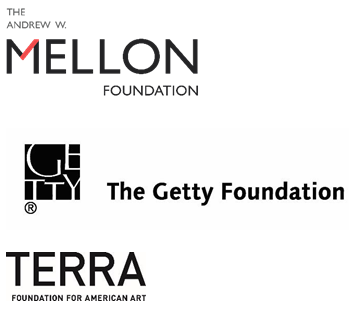
Association for Latin American Art
ALAA Graduate Student Travel Award
We are pleased to announce the annual ALAA Graduate Student Travel Award. The award, generously funded by former ALAA president Patricia Sarro, will provide $500 toward expenses related to attending the CAA annual conference, ALAA business meeting, and ALAA sponsored sessions. Funds may be put towards hotel costs, registration, or airfare/ground travel. The awardee need not be presenting (although presenters are encouraged to apply), but should demonstrate a specific need to attend sessions or visit archives in the conference city. To apply, please send a letter of interest, including your current research area, name of your university, program, advisor, and specific purpose for attending to the conference by email to Michele Greet (mgreet@gmu.edu) by October 31. The awardee will be selected by the executive committee and will be notified of his/her acceptance by November 15. Funds will be paid upon receipt of the award, but awardee must submit receipts to ALAA verifying that funds have gone toward conference expenses (within 2 weeks of returning from the conference). The awardee is also expected to attend the ALAA business meeting at the conference where he/she will be recognized as an award recipient. The awardee will also receive one year of complimentary ALAA membership.
Historians of German, Scandinavian, and Central European Art and Architecture
The Historians of German, Scandinavian, and Central European Art and Architecture (HGSCEA) will sponsor a session at the annual CAA conference in Los Angeles on Saturday, February 24 from 2 to 3:30 p.m. Chaired by Allison Morehead, “Critical Race Art Histories in Germany, Scandinavia, and Central Europe” will include papers by Rebecca Houze on the art colony at Gödölló, Patricia G. Berman on Nordic Vitalism, Bart Pushaw on Nordic art’s colonialist turn, and Kristin Schroeder on the paintings of Christian Schad.
HGSCEA members are also cordially invited to attend our annual dinner reception, which will take place on Thursday, February 22 from 7 to 9 p.m. near the LA Convention Center (location TBA). As always, the event is free for current members and provides an opportunity to meet old friends and make new acquaintances.
The winner of this year’s Emerging Scholar Publication Prize will be announced at the reception; this award of $500 is given to a current HGSCEA member who is either a graduate student or has received a PhD within the last five years, in recognition of a distinguished essay published in 2017 on any topic in the history of German, Scandinavian, or Central European art, architecture, design, or visual culture (submission deadline: December 18). Current HGSCEA members who are either graduate students or have received a PhD within the last five years may also apply to HGSCEA for a small travel stipend to attend the conference.
For more details on the session, dinner, prize, and travel stipend, please go to HGSCEA’s website: http://hgscea.org/
Association for Textual Scholarship in Art History
Member Publications
Books
Liana De Girolami Cheney, et al. Radiance and Symbolism in Modern Stained Glass: European and American Innovations and Aesthetic Interrelations in Material Culture. Cambridge, UK: Cambridge Scholar Publisher, 2016.
Sara Nair James, Art in England from the Saxons to the Tudors: 600-1600. Oxford: Oxbow/Casemate Books, 2016.
Articles
Tina Waldeier Bizzarro, Rosemount College, “The Politics of Domesticating the Eternal: The Roadside Shrines of Sicily,” in Iconocrazia, 10 (2016), Issue on Arts & Politics: Rhetorical Quest in Cultural Imaging. Online. http://www.iconocrazia.it/category/iconocrazia-102016-arts-and politics/w.iconocrazia.it.
Charles Burroughs, Visiting Professor at GENESEO, “Fluid City: River Gods in Rome and Contested Topography.” Mediaevalia 36/37 (2015/6): 187-222.
Charles Burroughs, Visiting Professor at GENESEO, “The Nymph in the Doorway: Revisiting a Central Motif of Aby Warburg’s Studyof Culture.” California Italian Studies 6.1 Issue title: “The Fixity and Flexibility of Images: Italian Art and Identity over Time” (2016). Online. http://escholarship.org/uc/item/1md337mp
Giuseppe Cascione, University of Bari, “The Icon and the imperium, ” in Iconocrazia, 10 (2016) Issue on Arts & Politics: Rhetorical Quest in Cultural Imaging, http://www.iconocrazia.it/category/iconocrazia-102016-arts-and politics/w.iconocrazia.it.
Liana De Girolami Cheney, Independent Scholar, “Giorgio Vasari’s Justice: Political Glory for the Farnese Family” in Iconocrazia, 10 (2016) Issue on Arts & Politics: Rhetorical Quest in Cultural Imaging http://www.iconocrazia.it/category/iconocrazia-102016-arts-and-politics/
Liana De Girolami Cheney, Independent Scholar, “Giorgio Vasari’s Last Supper: A Thanksgiving Celebration,” Cultural and Religious Studies, December 2016, Vol. 4, No. 12, 735-77.
Liana De Girolami Cheney, Independent Scholar, “Giorgio Vasari’s Conception of Our Lady: A Divine Fruit,” Journal of Religious Studies, Vol. 4, No. 4 (Winter 2016), 87-115.
Liana De Girolami Cheney, Independent Scholar, “Edward Burne-Jones’s The Planets: Musical Spheres and Visions of a Benevolent Cosmos,” Journal of Literature and Art Studies, July 2017, Vol. 7, No. 7, 1-57.
Liana De Girolami Cheney, Independent Scholar, “The Labor of the Months and The Zodiac Signs in the Cathedral of Otranto: Symbols of Labor and Time,” Journal of Culture and Religious Studies, November 2016, Vol. 4, 11: 682-70.
Liana De Girolami Cheney, Independent Scholar, “Giorgio Vasari and Niccolò Machiavelli: A Medicean Appetite,” Journal of Arts and Humanities, Vol. 5, Issue 12 (2016), 35-48.
Liana De Girolami Cheney, Independent Scholar, “Giorgio Vasari’s Fine Arts in the Vite of 1550:” Journal of Literature and Art Studies, David Publishing Company Vol. 7, No. 2 (February, 2017), 140-78.
Liana De Girolami Cheney, Independent Scholar, “Edward Burne-Jones’s The Planet Mars,” Pre-Raphaelite Studies Vol. XXIV, No. 3 (Fall 2016), 15-27.
Liana De Girolami Cheney, Independent Scholar, “Illustrations for Dante’s Inferno: A Comparative Study of Sandro Botticelli, Giovanni Stradano and Federico Zuccaro,” Journal o Cultural and Religious Studies, Vol. 4, No. 8 (August 2016), 488-519.
Liana De Girolami Cheney, Independent Scholar, “Giorgio Vasari’s Saint George: A Christian Liberator,” Notes on Early Modern Art, Vol. 3, No. 2 (Summer 2016), 1-9.
Liana De Girolami Cheney, Independent Scholar, “Giorgio Vasari and Mannerist Architecture: A Marriage of Beauty and Function in Urban Spaces,” Journal of Literature and Art Studies, Vol. 6, No. 10 (October 2016), 1150-71.
Liana De Girolami Cheney, Independent Scholar, “Jacopo Tintoretto’s Female Concert: Musica Arcadia,” Notes on Early Modern Art, Vol. 3, No.1 (Winter 2016), 27-39.\
Liana De Girolami Cheney, Independent Scholar, “Humanism, Italian Renaissance and Islamic Culture in the Arts,” Sabah Ülkesi, ed. Ahmet Faruk Caglar, (SAYI 46, Ocak, 1- 2016), 55-59 (in Turkish)
Liesbeth Grotenhuis, “Finger on the Lips:Poussin’s Animation of the Hieratic in the Moses Tableaus,” in Iconocrazia, 10 (2016) Issue on Arts & Politics: Rhetorical Quest in Cultural Imaging, http://www.iconocrazia.it/category/iconocrazia-102016-arts-and politics/w.iconocrazia.it.
Sara Nair James, Mary Baldwin University, emerita, “Wit and Humor in Ugolino di Prete Ilario’s Life of the Virgin at Orvieto,” Source: Notes in the History of Art, Vol. 36, nos. 3 and 4 (Spring/Summer 2017), 159-67.
Sara Nair James, Mary Baldwin University, emerita, “ St. Joseph in Ugolino di Prete Ilario’s Life of the Virgin at Orvieto: Pater Familias and Artisan of the Soul.” Gesta, vol 55 no 1 (spring, 2016),79-104.
Sara Nair James, May Balwin University emerita,“A Retrospective of Fine American Stained Glass: The Windows of Trinity Church, Staunton, Virginia,” in Radiance and Symbolism in Modern Stained Glass: European and American Innovations, Liana De Girolami Cheney, ed. Cambridge [UK]: Cambridge Scholar Publishing, 2016,
William R. Levin, Centre College, emeritus, “Franciscan Influences on Charitable Practice at the Early Florentine Misericordia,” in The World of St. Francis of Assisi: Select Proceedings from the First International Conference on Franciscan Studies, Siena, Italy, July 16-20, 2015 (Siena: Betti Editrice, 2017).
Sarah J. Lippert, University of Michigan a Flint, “Canova’s Perseus as Emblem of Italy,” in Iconocrazia, 10 (2016) Issue on Arts & Politics: Rhetorical Quest in Cultural Imaging, http://www.iconocrazia.it/category/iconocrazia-102016-arts-and politics/w.iconocrazia.it.
Donato Mansueto, Independent Scholar, “ Who Holds the Reins? Notes Equestrian Metaphors and Politics in Some Sixteenth-and Seventeenth-Century Emblems,” in Iconocrazia, 10 (2016) Issue on Arts & Politics: Rhetorical Quest in Cultural Imaging, http://www.iconocrazia.it/category/iconocrazia-102016-arts-and politics/w.iconocrazia.it.
Maureen Pelta, Moore College, “The Power of Cheese Redux: Reconsidering Church and State in Early Cinquecento Parma,” in Iconocrazia, 10 (2016) Issue on Arts & Politics: Rhetorical Quest in Cultural Imaging http://www.iconocrazia.it/category/iconocrazia-102016-arts-and politics/w.iconocrazia.it.
Brian D. Steele, “The Politics of Representation: Paolo Veronese, Benedetto da Mantova, and the Wedding at Cana for S. Giorgio Maggiore,” in Iconocrazia, 10 (2016) Issue on Arts & Politics: Rhetorical Quest in Cultural Imaging, http://www.iconocrazia.it/category/iconocrazia-102016-arts-and politics/w.iconocrazia.it.
Historians of Netherlandish Art
We invite members of the Historians of Netherlandish Art (HNA) to apply for the 2018 HNA Fellowship. Scholars of any nationality who have been members in good standing for at least two years are eligible to apply. The topic of the research project must be within the field of Northern European art ca. 1400-1800. Up to $2,000 may be requested for purposes such as travel to collections or research facilities, purchase of photographs or reproduction rights, or subvention of a publication. Preference will be given to projects nearing completion (such as books under contract). Winners will be notified in February 2018, with funds to be distributed by April. The application should consist of: (1) a short description of project (1-2 pp); (2) budget; (3) list of further funds applied/received for the same project; and (4) current c.v. A selection from a recent publication may be included but is not required. Pre-dissertation applicants must include a letter of recommendation from their advisor.
Applications should be sent, preferably via e-mail, by December 14, 2017, to Louisa Wood Ruby, Vice-President, Historians of Netherlandish Art. E-mail: WoodRuby@frick.org; Postal address: The Frick Collection and Art Reference Library, 10 East 71 Street, New York NY 10021.
European Postwar & Contemporary Art Forum
After seven years of hard work and dedication, EPCAF’s founder, Catherine Dossin, has decided to step down from her position as President. Impressively, Catherine has produced an international organization that provides a scholarly resource as well as opportunities for research dissemination. Under her leadership, EPCAF has organized panels at conferences in the US and France, has initiated an annual EPCAF colloquium in Paris, and has edited a volume of scholarly essays titled France and the Visual Arts since 1945: Remapping European Postwar and Contemporary Art,which is forthcoming from Bloomsbury Academic Press. We are grateful for Catherine’s hard work, as well as that of the counselors who are stepping down: Noit Banai, Adrian Duran, Maud Jacquin, Karen Kurczynski, and Rosemary O’Neill.
Lily Woodruff, Assistant Professor of Art History at Michigan State University, is assuming the role of President, and Emmanuel Guy, Assistant Professor of Art and Design History at Parsons, Paris, will be serving as Director of Research. An announcement of the list of new counselors will be made soon and posted on our website: http://epcaf.org.
In coming weeks, EPCAF will be sending out a call for contributions to a panel we will be proposing for the annual Festival de l’histoire de l’art in Fontainebleau. If you wish to receive our quarterly circulaire which announces research opportunities and EPCAF events, please email Lily at woodru56@msu.edu. Membership in EPCAF is free.
International Sculpture Center
Sculpture magazine, a publication of the International Sculpture Center, rings in the new year with a very special Jan/Feb 2018 Education issue. The issue will feature reviews of university exhibitions, interviews with emerging and established artists and updates on upcoming exhibitions.
The Board of Trustees of the International Sculpture Center are proud to honor Alice Aycock and Betye Saar with the Lifetime Achievement in Contemporary Sculpture Award. A gala and awards ceremony held in their honor will occur next April in New York City.
The International Sculpture Conference was held October 25-28, 2017 in Kansas City, MO with approximately 300 attendees from around the world who experienced panel discussions with artists and arts professionals, keynote Willie Cole, hands-on workshops, a gallery hop, receptions, networking opportunities, and much more. Thank you to everyone that joined the ISC In Kansas City, and we can’t wait for 2018. More information on the 2018 conference location is coming soon.
Association of Print Scholars
The Association of Print Scholars is pleased to announce our 2018 CAA panel “Now you see it, now you don’t: Materialism and Ephemeral Prints,” chaired by Dr. Yasmin Railton of Sotheby’s Institute of Art. Research into the production, function, and reception of ephemeral materials in printmaking has recently become a fertile line of inquiry. From the early modern period to twenty-first century interest in materiality, recent theoretical approaches to matter offer new insight into the production and consumption of prints. Speakers include Ruth Pelzer-Montada (University of Edinburg), Margherita Clavarino (Warburg Institute), James Denison (University of Michigan), and Margaret Holben Ellis (Institute of Fine Arts, New York University).
Galina Mardilovich has been awarded a grant from APS to support the publication of her forthcoming book about Russian printmaking in the late Imperial period. Mardilovich is an independent scholar specializing in the history of prints of the long nineteenth century. She received her Ph.D. from the University of Cambridge in 2013. Her research has been supported by the Metropolitan Museum of Art, the Getty Research Institute, and the Francis Haskell Memorial Fund, among others. Her work has been published in Print Quarterly, Art History, and most recently, The Burlington Magazine.
The APS Collaboration Grant funds public programs and projects that foster collaboration between members of the print community and/or encourage dialogue between the print community and the general public. The grant carries a maximum award of $1,000. Projects should provide new insights into printmaking and introduce prints to new audiences. Deadline is February 1, 2018. For eligibility requirements and proposal submissions visit the APS website, printscholars.org
Africa at the Quai Branly Museum and the Mohammed VI Museum for Modern and Contemporary Art: Challenges for Exhibitions of African Art
posted by CAA — Nov 16, 2017
Colette Apelian, an art historian based in Rabat, Morocco and Los Angeles, California, was invited to submit the following article by Pearlie Rose S. Baluyut, a member of CAA’s International Committee. Apelian holds a PhD in art and architectural history and an MA in Islamic studies from UCLA.
Do museums fail visitors and benefactors when they allow the use of objects to present what many might consider selective histories and definitions of identities? The answer may well be yes, a response that struck me after I visited Picasso Primitive or Primitive Picasso (Picasso Primitif) at the Quai Branly Museum (Musée du Quai Branly; MQB) in Paris, France (March 28–July 23, 2017) and Africa in the Capital City (L’Afrique en Capitale) at the Mohammed VI Museum for Modern and Contemporary Art (Musée Mohammed VI d’Art Moderne et Contemporain; MMVI) in Rabat, Morocco (March 28–July 31, 2017).
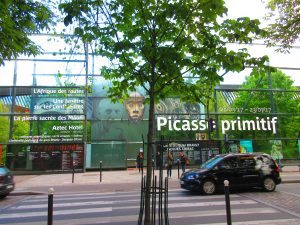
Quai Branly Museum façade. Photo by author.
At the MQB, what can be described as Pablo Picasso’s peccadillos were vaulted as examples of artistic genius and the result of his contact with African artifacts. As visitors walked through the exhibition, they could see Picasso’s art and writings, or reproductions thereof, juxtaposed with African masks, sculptures, and seminude postcard representations of Malinke and Sudanese women. The exhibition included objects Picasso collected, viewed in the Trocadero Ethnography Museum, and/or traded with fellow, mostly male, artists. Curatorial wall texts and a brochure in French and the occasional English explained how Picasso’s figural abstraction defined modern art.
Still, the exhibition could have used more clarification. I wondered why, especially in light of displays in other Parisian museums, the MQB thought visitors would find the Picasso-great-man and artist myth appropriate. The privileging of Picasso and his primitivism in an undefined modern art history was underexplained. Most of the nude bodies and, according to wall texts, the “disfigured” “monster” faces he created were predominantly of females with apparently unremarkable lives or histories beyond Picasso’s use. The suggestion that Picasso made tableaus of stylized penises in response to his exposure to African statues with erect phalluses did not seem to adequately explain his fascination with human sexuality.
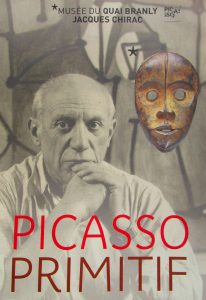
Picasso Primitive brochure cover detail. Photo by author.
Perhaps odder still was how the MQB left unpacked and decontextualized the notion of the primitive. The museum’s (and/or Picasso’s ?) definition all but ignored the history of this term and, as such, the discourse about it and the Other. In so doing, the show affirmed yet again an ethnocentric characterization of the MQB that James Clifford, among others, criticized the museum for entrenching after its 2006 opening. (See James Clifford, “Quai Branly in Process,” October, Spring 2007, 3–23.) The effects of refusing to detangle and define primitive were compounded by the relative lack of wall and brochure text explaining the history, circumstances of acquisition and display, and the socioreligious significances of most masks and statues shown or referenced in the exhibition. It was compounded by the MQB not sufficiently clarifying the sociopolitical and economic contexts in which Picasso traded images of unclothed Africans and created and sold art. In the 2010 Spectacular Art of Jean-Léon Gérôme exhibition at the J. Paul Getty Center in Brentwood, California (June 15–September 12, 2010), visitors learned that Gérôme’s prurient Orientalism was cultivated in relation to the contemporary European marketplace. The perhaps unintended impression that Primitive Picasso organizers hoped to titillate for monetary profit at the expense of the Other was accentuated by the absence of a similar analysis, if indeed the artworks on display were created for public, not private, consumption. Consumption was also underclarified.
More explanation was additionally necessary in the wall texts and brochures for Africa in the Capital. The largest section of the show was staged in the museum named after the king of Morocco, Mohammed VI. Here, visitors walked through rooms of paintings, sculpture, and photography that, according to one brochure, celebrated African creativity, African identity, African culture, the African art scene, and, in the case of at least one artist, humanity removed from racial identifiers. Exhibition materials informed us that the works of art were created by North and/or sub-Saharan Africans, including artists born and/or living off the continent. One example is the Moroccan-French photographer Leila Alaoui, who died shortly after a 2015 Burkina Faso terrorist attack while she was on assignment for Amnesty International. She was born in Paris and resided and worked in Europe, the United States, and Morocco. Alaoui, with her strong sense of injustice and interest in immigration, would probably note that the ability of some artists to easily move across borders is an elite privilege, an important distinction I could not find in exhibition materials. I could also see little discussion about the influences and significance of living and making art in diaspora cultures. The contradictions of an exhibition that was meant to celebrate diversity, yet included artists based upon ancestry alone, appeared lost on the organizers.
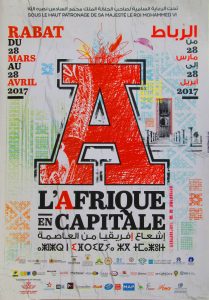
Africa in the Capital brochure cover. Photo by author.
Though the organizers intended Africa in the Capital City to celebrate African identity and creativity, the March 2017 opening and governmental support suggests an ulterior motive: to publicize Morocco’s reentry into the African Union (AU), made official in January 2017. The membership signifies a majority of AU member states’ acceptance of Morocco’s claims to the Western Sahara and its natural resources, a point of contention resulting in Morocco’s exit from a precursor to the AU and, over the decades, international condemnation of what former United Nations Secretary-General Ban Ki-moon called the Moroccan occupation. The controversy behind Morocco’s AU membership and actions in the Western Sahara was not part of the exhibition.
Also difficult to locate were critical artworks or narratives about contemporary Africa. One might conclude that there are no artworks that comment on accusations of corruption and cronyism, misuse of the environment, or violations of human rights, not to mention a lack of development; genocide; violence against women, the LGBT community, and minorities; and, of course, forced displacement and illegal immigration. The lacunae were all the more bizarre considering the inclusion of Alaoui, who depicted sub-Saharan immigrants in her 2014 Marrakesh Biennial submission Crossings and other artwork. As painfully indicated by the circumstances surrounding her demise and the deaths of African, European, and United States military and civilians, sticking one’s head in the proverbial sand cannot make problems disappear. Worse, the silence, like the silence at the MQB, arguably revictimizes her and others. The silence ignores the legacy of their work and sacrifice while leaving a door open to future transgressions. It is frankly unbefitting Morocco’s role and influence as an AU member in an exposition at a museum named after Morocco’s monarch and an exposition in 2017.
Again, I wonder if the MMVI and the MQB failed patrons, benefactors, and themselves. Perhaps we can ask the four vendors across the busy highway in front of the MQB on the day I visited. Of African descent, they were placing their wares for sale—miniature reproductions of the Eiffel Tower and similar iconic trinkets—on corded ground cloths used to collect items quickly should the police arrive to chase them away.
Finalists for the 2018 Morey and Barr Awards
posted by CAA — Nov 14, 2017
CAA is pleased to announce the 2018 finalists for the Charles Rufus Morey Book Award and two Alfred H. Barr Jr. Awards. The winners of the three prizes, along with the recipients of other Awards for Distinction, will be announced in January 2018 and presented during Convocation in conjunction with CAA’s 106th Annual Conference, taking place in Los Angeles, February 21-24, 2018.
Charles Rufus Morey Book Award
The Charles Rufus Morey Book Award honors an especially distinguished book in the history of art, published in any language between September 1, 2016, and August 31, 2017. The four finalists for 2018 are:
Benjamin Anderson, Cosmos and Community in Early Medieval Art (New Haven: Yale University Press, 2017)
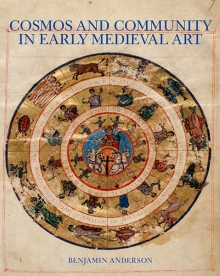
Susanna Berger, The Art of Philosophy: Visual Thinking in Europe from the Late Renaissance to the Early Enlightenment (Princeton: Princeton University Press, 2017)
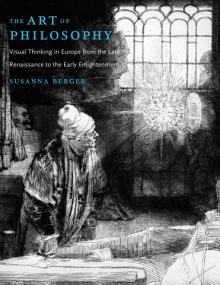
Laura Anne Kalba, Color in the Age of Impressionism: Commerce, Technology, and Art (University Park: Pennsylvania State University Press, 2017)
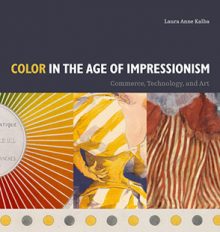
Dorothy Ko, The Social Life of Inkstones: Artisans and Scholars in Early Qing China (Seattle: University of Washington Press, 2017)
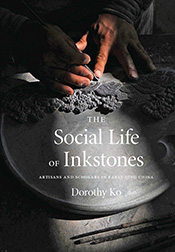
Alfred H. Barr Jr. Award
The Alfred H. Barr Jr. Award for museum scholarship is presented to the author(s) of an especially distinguished catalogue in the history of art, published between September 1, 2016, and August 31, 2017, under the auspices of a museum, library, or collection. The five finalists for 2018 are:
Matthew Affron, Paint the Revolution: Mexican Modernism, 1910-1950 (New Haven: Yale University Press, 2016)
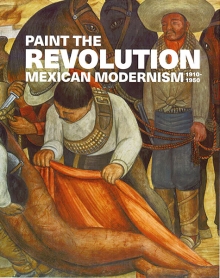
Wanda M. Corn, Georgia O’Keeffe: Living Modern (Brooklyn: Brooklyn Museum, 2017)
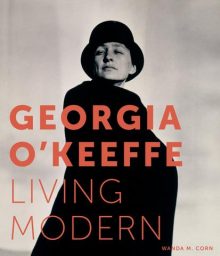
Robert Cozzolino, Anne Classen Knutson, and David M. Lubin, eds., World War I and American Art (Princeton: Princeton University Press, 2016)
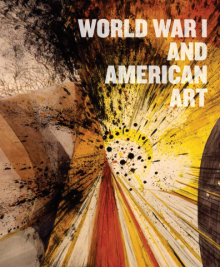
Barbara Drake Boehm and Melanie Holcomb, eds., Jerusalem, 1000-1400: Every People Under Heaven (New York: Metropolitan Museum of Art, 2016)
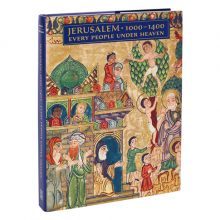
Pilar Silva Maroto, Bosch: The Fifth Centenary Exhibition (New York: Thames & Hudson, 2016)
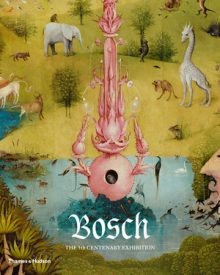
Alfred H. Barr Jr. Award for Smaller Museums, Libraries, Collections, and Exhibitions
In 2009, CAA established a second Barr award for the author(s) of catalogues produced by smaller museums, libraries, and collections with an annual operating budget of less than $10 million. The finalists for the second Barr award for 2018 are:
Melissa Rachleff, Inventing Downtown: Artist-Run Galleries in New York City, 1952-1965 (New York: Grey Art Gallery, New York University, 2017)
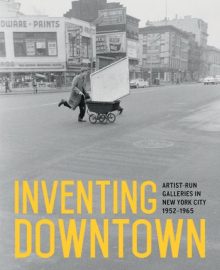
Jane Ashton Sharp, Thinking Pictures: The Visual Field of Moscow Conceptualism (New Brunswick, NJ: Zimmerli Art Museum, Rutgers, 2016)
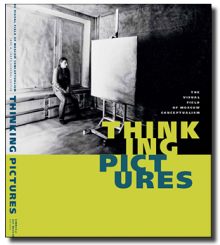
Kevin Sharp, ed., Wild Spaces, Open Seasons: Hunting and Fishing in American Art (Norman, OK: University of Oklahoma Press, 2016)
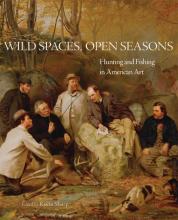
The presentation of the 2018 Awards for Distinction will take place on Wednesday evening, February 21, 6:00–7:30 PM, at the LA Convention Center in Los Angeles. The event is free and open to the public. For more information about CAA’s Awards for Distinction, please contact Aakash Suchak, CAA grants and special programs manager at 212-392-4435.





